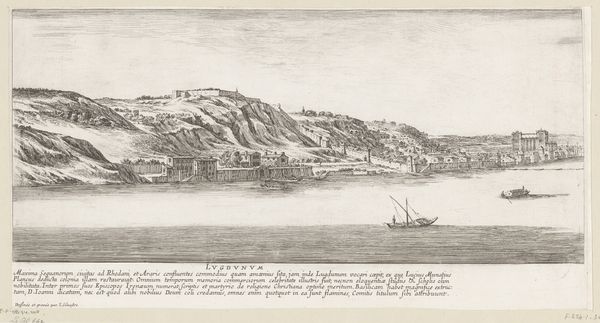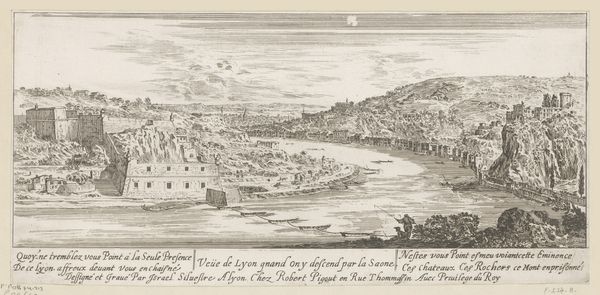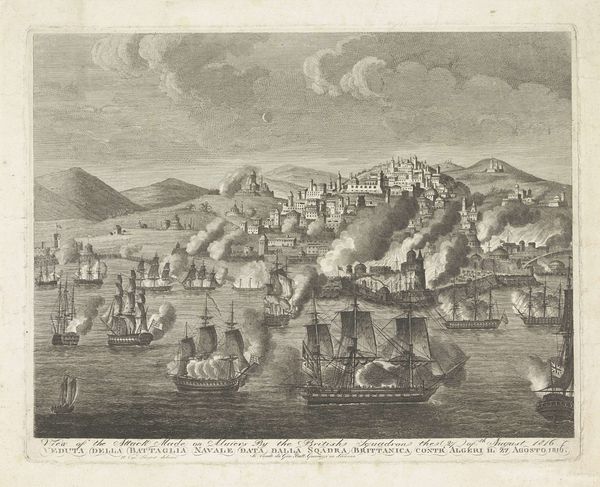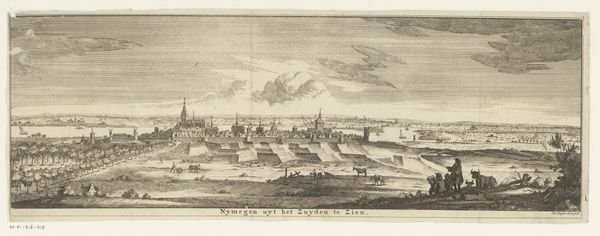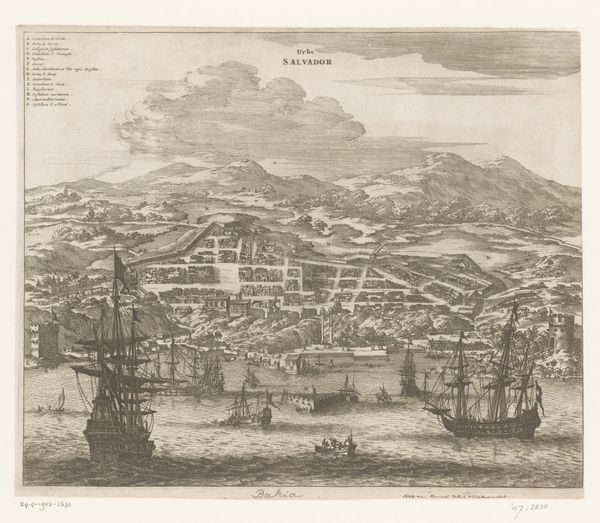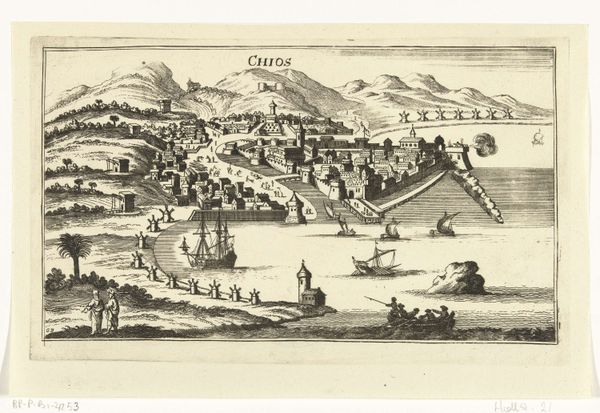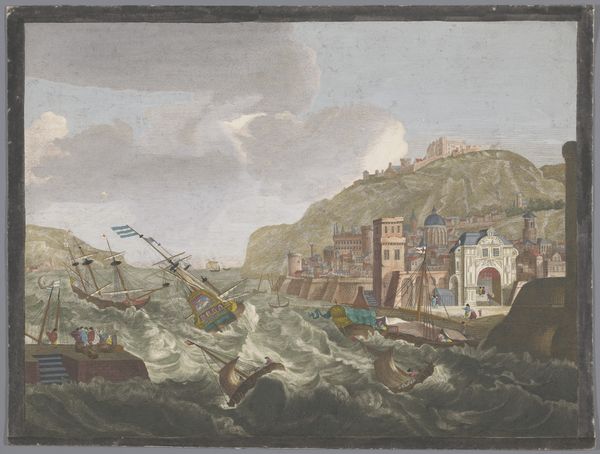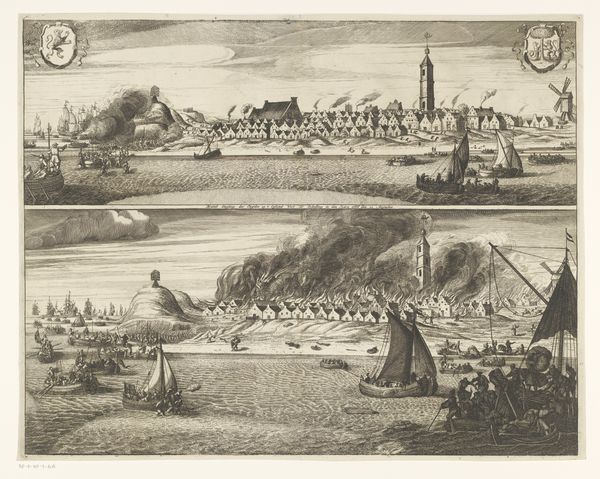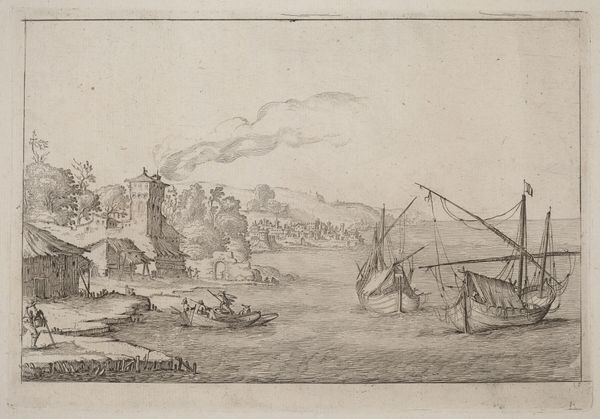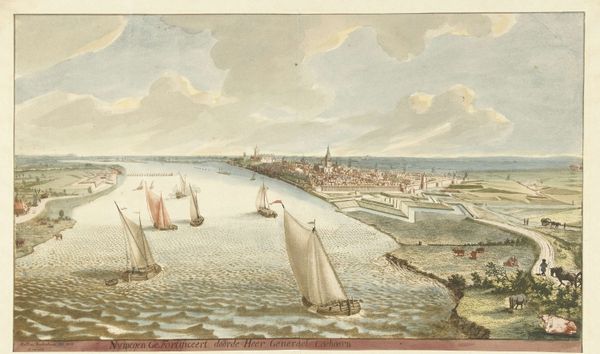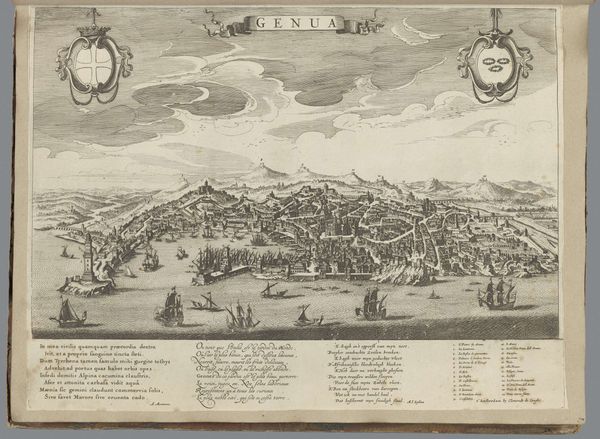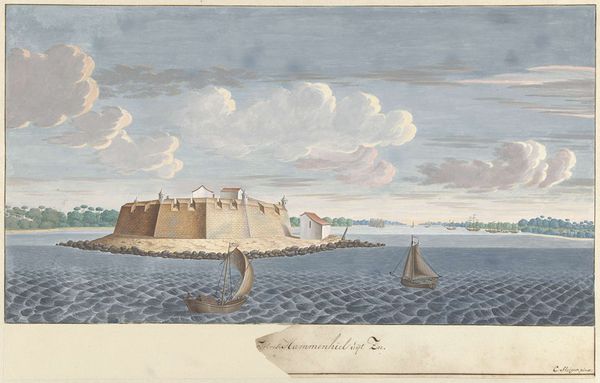
Two Views of Dutch East India Company Trading Posts: Lawec in Cambodia and Banda in the Southern Moluccas c. 1662 - 1663
painting, oil-paint
water colours
dutch-golden-age
painting
oil-paint
landscape
oil painting
coloured pencil
cityscape
watercolour illustration
genre-painting
watercolor
Dimensions height 97 cm, width 140 cm
Johannes Vinckboons created this painting of Dutch East India Company trading posts using oil on canvas sometime in the 17th century. Oil paint, of course, has a rich history, ground from powdered pigments, and when applied to canvas, it allows for subtle blends and realistic depictions. But it's important to remember that this image isn’t just a neutral depiction of the landscape. The smooth surface of the painting belies the immense effort it took to establish and maintain these distant outposts. Vinckboons never traveled to Asia, but here he meticulously records details of the architecture, the ships, and the overall layout of the Dutch operations. There are human figures here, but they are dwarfed by the landscape and architecture, which is a reminder of the labor required to transform foreign lands into centers of trade. The painting represents the viewpoint of the Dutch East India company and their aspirations of expanding their trade networks. By focusing on the materials and processes involved, we recognize the labor and social context behind this seemingly straightforward image, understanding it not just as a work of fine art, but as a document of global commerce.
Comments
From 1609 the East India Company was sailing to Lawec, near Phnom Penh. There the company purchased provisions, such as rice, butter, pork, and lard, for Batavia. Banda supplied mace and nutmeg. In 1621, Governor-General Coen punished the island for trading with other countries: all fifteen thousand islanders were killed or driven away. The ‘slaughterer of Banda’ founded nutmeg parcels, heavily guarded by forts.
Join the conversation
Join millions of artists and users on Artera today and experience the ultimate creative platform.
